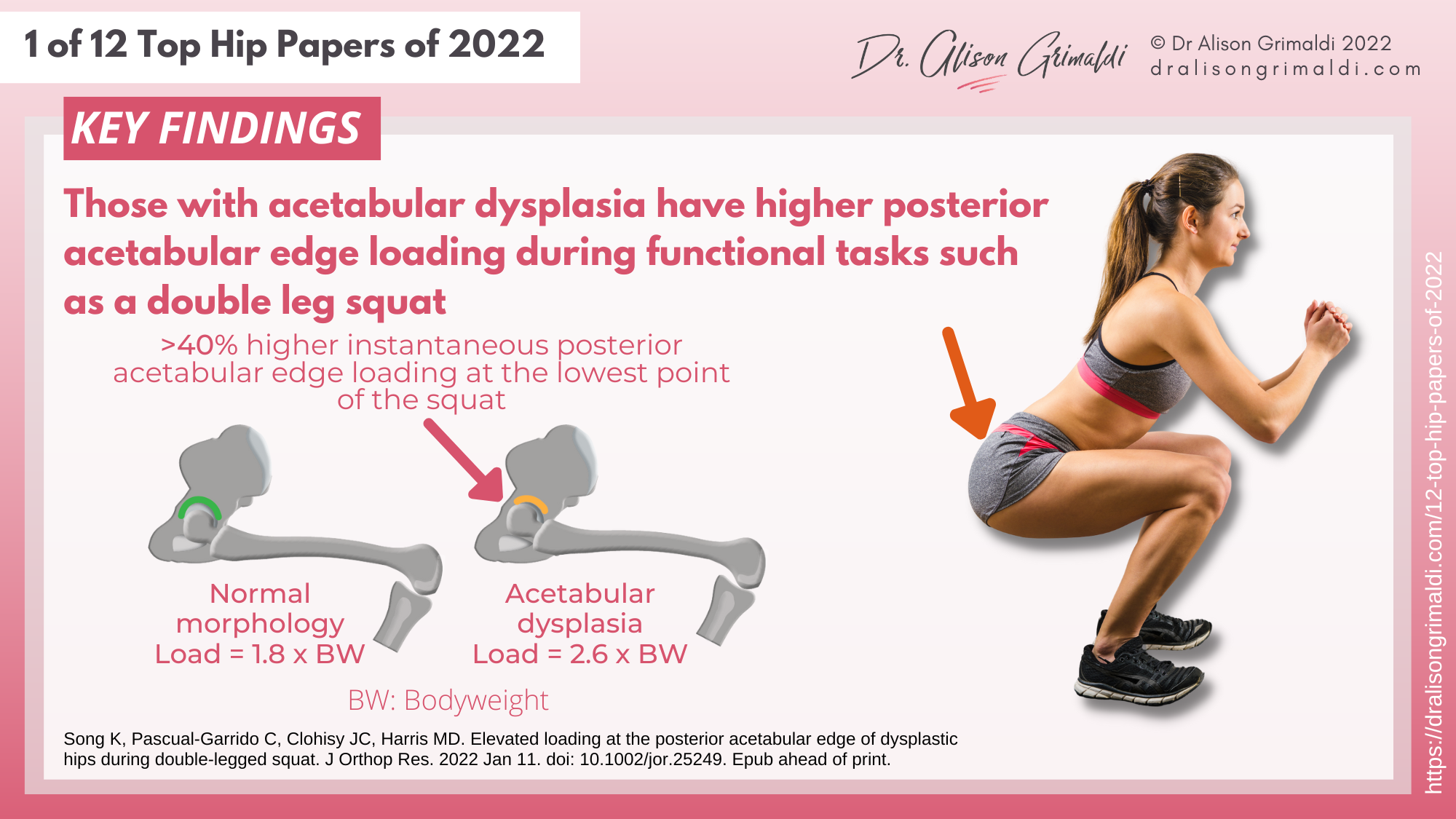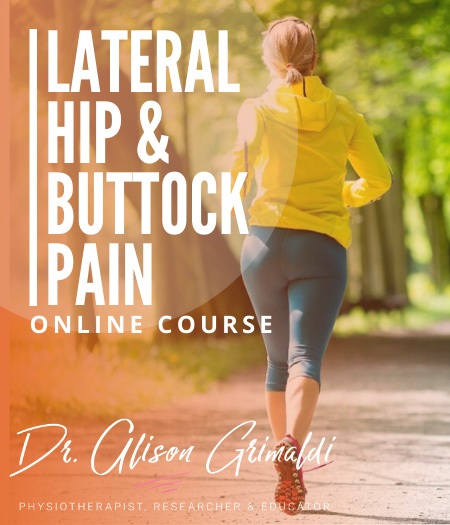1 of 12 Top Hip Papers of 2022 | Posterior acetabular edge loading in hip dysplasia

Welcome to my 12 Top Hip Papers series of miniblogs from 2022, starting with this one on elevated posterior acetabular edge loading in hip dysplasia. Some of you might have joined me for my 12 Top Hip papers series last year. Those were papers from over the years that have contributed strongly to our understanding of hip conditions and/or the assessment or management of hip pain or injury. If you haven't already downloaded your free ebook of those 12 papers, you can do it by clicking HERE.
This year, I'll be focussing on interesting hip papers published in 2022. I am aiming to provide an overview of how the research has moved the hip space forward this year. I have prepared infographics and key learnings for each paper. Quick but info-packed reads for this busy time of year.
Discover our Lateral Hip & Buttock Pain Course
If you enjoyed this blog, you might like to take the online course on Lateral Hip & Buttock Pain - 6 hours of guided online video content. Examine various joint-related, soft tissue-related and nerve-related conditions associated with lateral hip and buttock pain, their mechanisms, associated impairments, clinical diagnostic tests and management approaches. To learn more, take the lateral hip and buttock pain online course, or join me in an online or practical lateral hip and buttock pain workshop.
Let's kick off day one then, with this paper that found elevated posterior acetabular edge loading in hip dysplasia during deep squatting.

1 of 12 Top Hip Papers of 2022 : Elevated loading at the posterior acetabular edge of dysplastic hips during double leg squat
Often we think most about the impact of acetabular dysplasia on loads imposed on the anterior or lateral acetabulum, but those with posterior undercoverage of the femoral head can also be at risk of high posterior joint loads, posterior instability and buttock pain. This hip paper was first published online in January, 2022. Song and colleagues investigated posterior acetabular edge loading in dysplasia during a squat. Here's some key information about what they did, what they found, and the clinical implications.
Study Aim:
- To use subject specific musculoskeletal models to estimate acetabular edge loading during double‐legged squatting in hips of those with developmental dysplasia of the hip compared to healthy controls.
What was done:
- 3D pelvic and femoral bony anatomy from X-rays and MRI's and movement data was collected from a 3D kinematic system (Vicon) during squatting.
- This data was used within an Open Sim musculoskeletal model to estimate hip joint reaction forces and acetabular edge loading for 10 patients with hip pain and dysplasia and 10 healthy controls.
- Between-group differences were examined.

Clinical Implications:
The clinical implication from these findings is that for those with dysplasia, we need to consider posterior joint loading in functional tasks and rehab or gym exercises. Lumbopelvic and trunk position will have a large impact on these loads. Overemphasis on lumbar lordosis/anterior pelvic tilt or excessive trunk forward lean may increase these already high loads.
For those with posterior undercoverage of the femoral head - global undercoverage or acetabular retroversion resulting in focal posterior undercoverage - higher posterior edge loads and for some, posterior instability, may result in development of deep buttock pain. Consider how you might reduced posterior edge loading and provide more local muscle support for the posterior joint.
The main takeaways of this paper are:
i) Be aware of the posterior impact of dysplasia
ii) Consider the impact of pelvic position during a squat
Key Findings:
- Posterior acetabular edge loading in hip dysplasia was significantly higher in squatting compared with healthy controls:
- Healthy control group = 1.8 x bodyweight
- Acetabular dysplasia group = 2.6 x bodyweight
Posterior edge loading was substantially higher for those with dysplasia, in this task that is carried out regularly during everyday life and gym or rehabilitative exercises.
There is often a focus on anterior or antero-lateral loads in those with dysplasia, which are of course important, but don't forget the posterior joint for those with global or focal posterior undercoverage.

Like to learn more about managing posterior hip joint overload or instability?
In this course, you can find detailed information on pathoaetiology, assessment and management of buttock pain associated with posterior instability, impingement and many other conditions. To learn more, take the online course, or join me in a workshop.
This online course is included in Hip Academy and Hip Academy members receive discounts for online workshops.

Have you heard about Hip Academy?
Enjoy the benefits of a world class educational Hip Program, specifically designed by Dr Alison Grimaldi to help improve your knowledge surrounding the Hip and Pelvis, and become an expert in your field.
With all Hip Courses included, enjoy all the extra inclusions, including; access to the entire eBook series, growing video library, expanding PDF resource centre, regular member meetings, forums + lots more!


